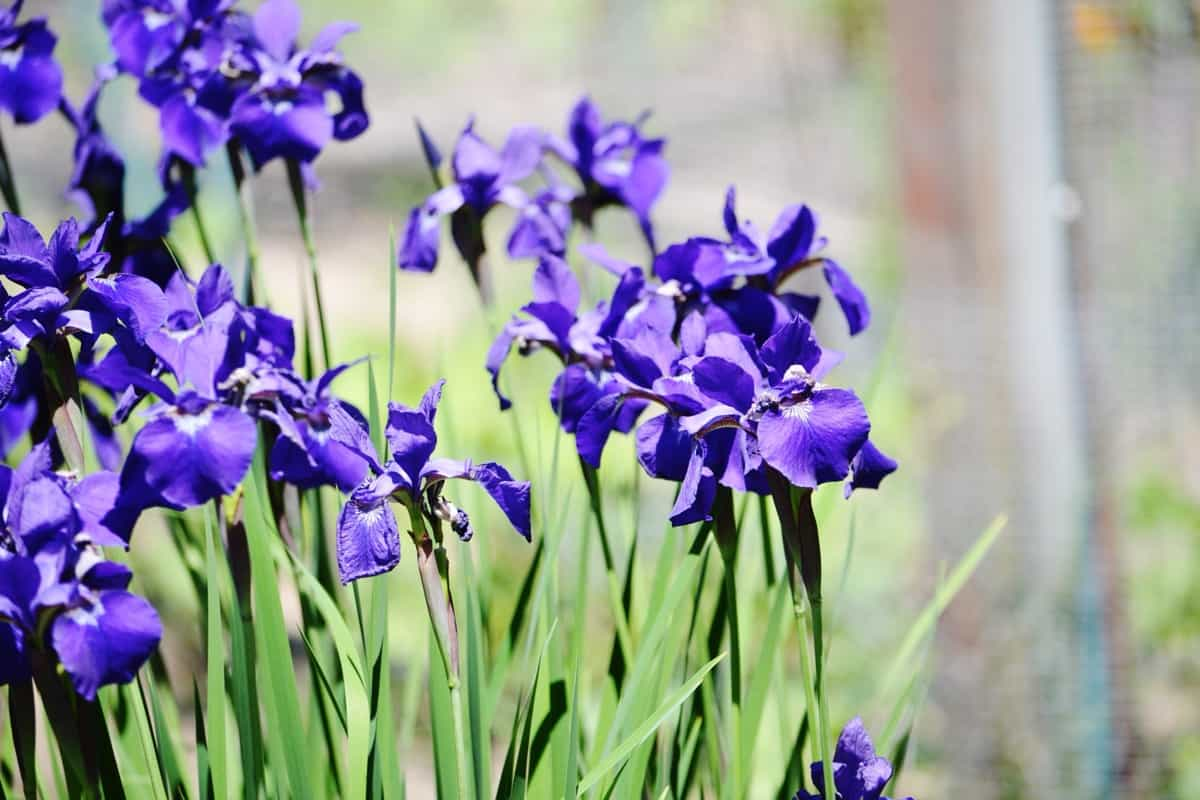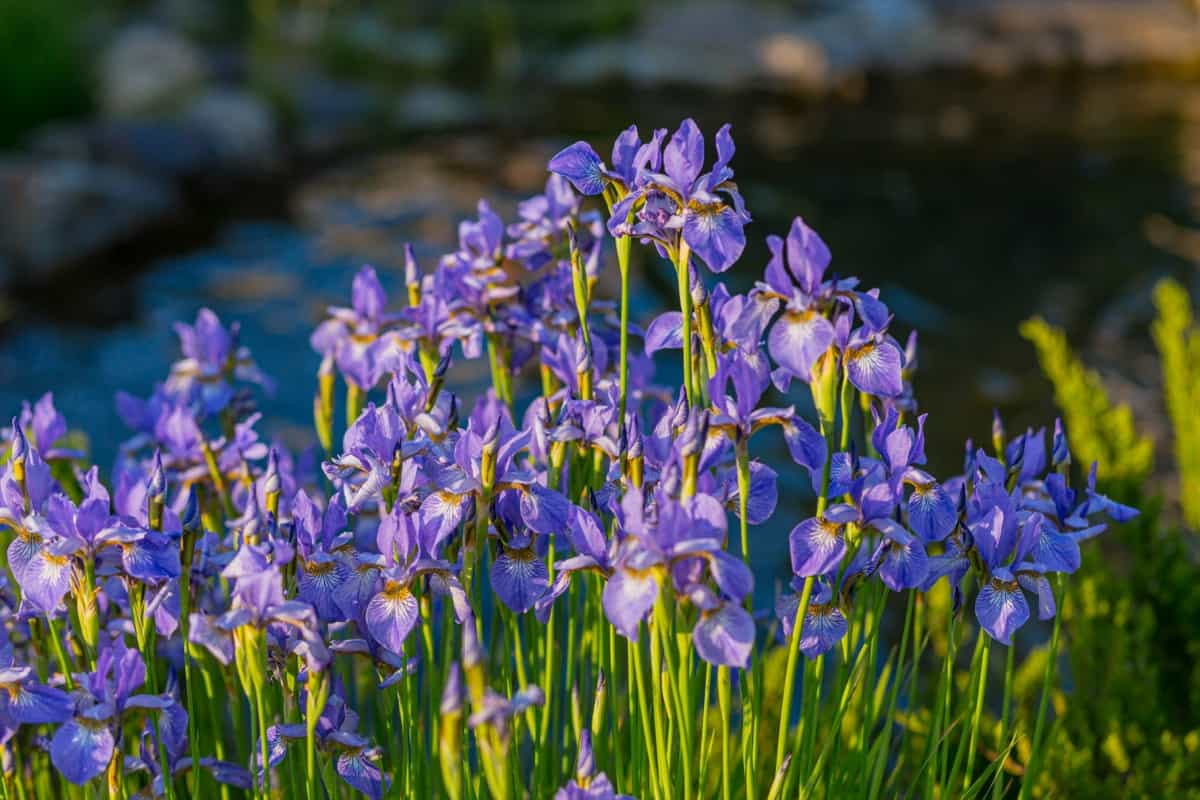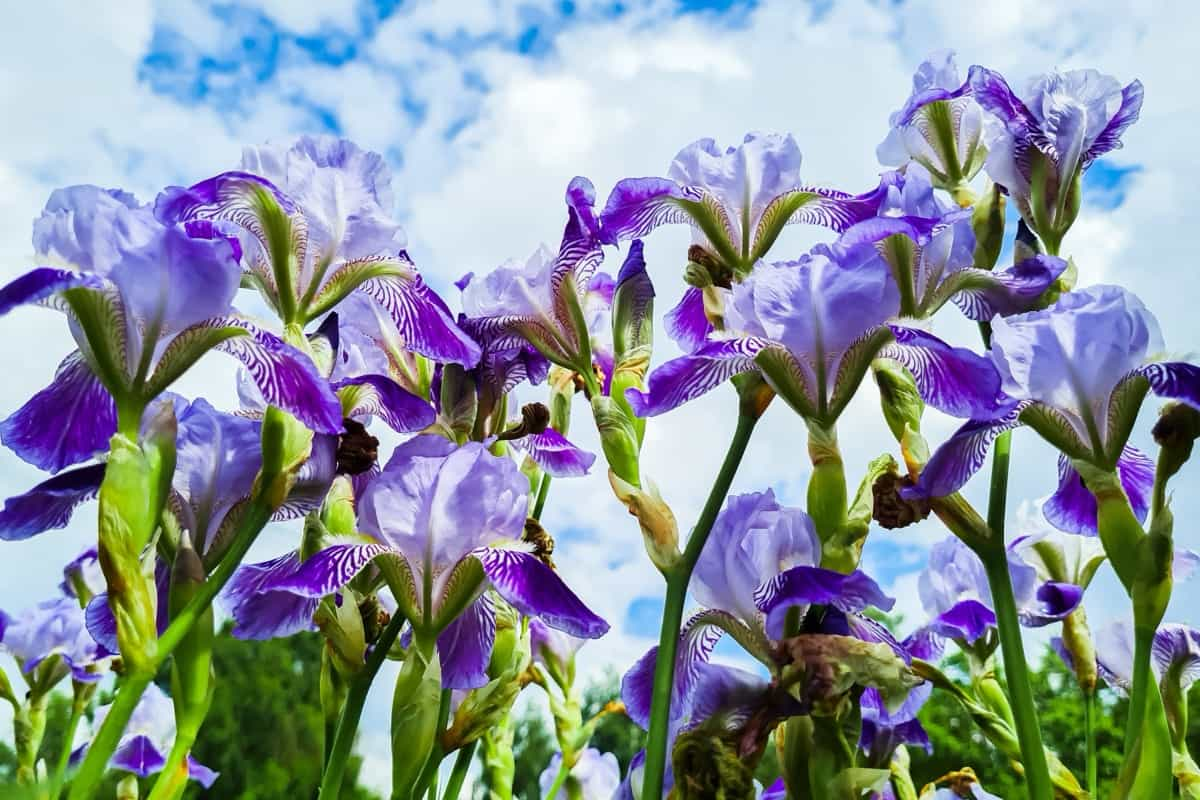Irises are vibrant flowers that can add beauty to any garden. If your Iris plant is not flowering as expected, there could be various reasons behind it. By understanding the factors that affect no blooms on Iris plants, such as improper division, pests, and diseases, you can take the necessary steps to ensure that your Irises thrive and bloom beautifully.

Reasons Why Your Iris is Not Blooming
Insufficient Sunlight
Shade Exposure
The lack of sunlight can leave your Irises feeling weak and Iris plants not producing flowers. Shade exposure can be caused by nearby trees casting shadows or buildings blocking out the light. It’s important to ensure that your Irises are getting at least 6-8 hours of direct sunlight daily to thrive. Without it, they may struggle to produce those vibrant blooms you’ve been eagerly waiting for.
Obstructions Blocking Sunlight
Obstructions like tall bushes or structures can also hinder the sunlight from reaching your Iris plants. To enhance Iris plant flowering, take a moment to assess their surroundings and trim back any obstacles that may be stealing away precious sunshine.
Improper Watering Regimen
Overwatering
Proper watering is key for the health of your Iris plants. Overwatering can lead to waterlogged soil, causing root rot and preventing blooms from developing. Remember, Irises prefer well-draining soil, so excessive moisture can be detrimental.
Underwatering
Underwatering can also prevent your Iris from blooming. Dry soil deprives the plant of the essential hydration it needs for growth and flower production. It’s important to strike a balance in watering – not too much, not too little. To improve Iris plant blooms, monitor the soil moisture levels regularly.
Nutrient Deficiency
Lack of Essential Nutrients
Irises require specific nutrients to thrive, and a lack of essential elements in the soil can hinder their growth.
Soil pH Imbalance
Why won’t my Iris plant bloom? One of the common Iris plant blooming issues is soil pH imbalance, which affects nutrient availability for the Iris plants. If the pH is too high or too low, certain nutrients may become inaccessible to the plants, leading to flowerless Iris plants. To ensure your Irises are getting the necessary nutrients, amend the soil accordingly by adding fertilizers or organic matter to improve nutrient levels and balance the pH.
Crowded Rhizomes
Rhizome Overcrowding
Crowded rhizomes can be a common culprit behind your Iris plant’s lack of blooms. When the rhizomes are packed too closely together, they end up competing for essential resources like water, nutrients, and space in the soil. This overcrowding can hinder the growth and development of your Iris plants.
In case you missed it: 10 Reasons Why Your Anthurium Plant is Not Blooming: Treatment and Remedies

Competition for Resources
To troubleshoot Iris plant blooms, it’s crucial to give your Irises adequate room to spread out and thrive. Consider dividing overcrowded clumps of rhizomes to create more breathing space for each plant. By doing so, you allow them to access the necessary resources without having to battle it out with their neighbors. Keep an eye on the density of your Iris bed and make adjustments as needed to prevent overcrowding issues from stifling their growth potential.
Pest and Disease Infestation
Aphid Infestation
Pests and diseases can damage the health of your Iris plants, hindering their ability to bloom vibrantly. One common culprit is the aphid, those tiny sap-sucking insects that can quickly multiply and weaken your Irises. Keep an eye out for these sneaky critters and take prompt action to prevent them from causing damage.
Fungal Diseases
Fungal diseases are another threat that can affect the overall well-being of your Iris plants. Moist conditions combined with poor air circulation create a perfect environment for fungi to thrive. When it comes to Iris plants not showing flowers, ensure proper watering practices and avoid overhead irrigation that can lead to excess moisture on leaves.
Incorrect Planting Depth
Shallow Planting
Incorrect planting depth can significantly impact the blooming of your Iris flowers. Planting too shallow might expose the rhizomes to drying out, leading to stunted growth and fewer blooms.
Deep Planting
On the other hand, planting too deep can cause the rhizomes to rot due to poor drainage. When it comes to Iris plant not flowering solutions, ensure that when planting your Iris position them at a depth where the top of the rhizome is slightly below the soil surface. This will offer them adequate protection while allowing for proper development.
Environmental Stress
Extreme Temperatures
During the peak of summer, your Iris plants might be feeling the heat – literally. Extreme temperatures can stress out these delicate flowers, causing them to struggle and potentially fail to bloom as expected. When the sun beats down relentlessly, it can zap the energy reserves of your Irises, leaving them weary and unable to produce those beautiful blooms you’ve been eagerly waiting for.
Drought Conditions
Lack of water means that these beauties are not getting the hydration they need to thrive and showcase their full potential. The dry spell can leave them parched and struggling to stay vibrant in such harsh circumstances. To help your Irises combat environmental stress from extreme temperatures and drought conditions, consider providing some shade during scorching days or increasing watering frequency when rainfall is scarce.
Inadequate Division
Infrequent Division
Infrequent division can lead to overcrowded rhizomes, resulting in stunted growth and lackluster blooms. Dividing your Irises at the right time is crucial for their overall health and vitality.
Division Timing
Timing is key when it comes to dividing Iris rhizomes. Spring or late summer are typically the best times to divide them, ensuring they have enough time to establish themselves before their next blooming season. By neglecting this important task, you could be hindering the potential beauty of your Irises. Keep an eye on the growth patterns and take action when necessary to promote healthy blooms year after year.
Variety-Specific Requirements
Chilling Requirements
Different Iris varieties have specific needs to thrive and bloom beautifully. Some types of Irises require a period of chilling to stimulate flowering, mimicking their natural habitat conditions. This chilling requirement is essential for triggering the growth cycle and promoting robust blooms.
In case you missed it: 10 Reasons Why Your Flower Plant is Not Blooming: Remedies and Treatment

Light Preferences
While some may thrive in full sun exposure, others prefer partial shade to prevent scorching or wilting of the delicate petals. It’s crucial to understand the unique light requirements of your Iris variety to ensure optimal growth and blooming success.
Aging Rhizomes
Decline in Rhizome Vitality
As time passes, the once-vibrant rhizomes in your garden may start showing signs of aging. The vitality that once fueled their blooming beauty begins to fade, impacting the overall health of your Iris plants. Aging rhizomes can lead to reduced flowering, smaller blooms, or even stunted growth. These changes indicate a need for renewal and rejuvenation within your Iris bed.
Need for Renewal
How to make the Iris plant bloom? Consider dividing and replanting the aging rhizomes to promote new growth and ensure healthier blooms in the future. This process allows for better nutrient absorption and reduces competition among overcrowded rhizomes. By recognizing the natural cycle of plant life and taking proactive steps to address aging rhizomes, you can maintain a thriving Iris garden year after year.
In case you missed it: Blooming Borders: 15 Best Border Flowers for Your Garden

Conclusion
If your Iris plant is not blossoming, it may be due to a combination of factors ranging from insufficient sunlight and improper watering to nutrient deficiency and pest infestations. By identifying the specific issue affecting your Irises, you can take necessary steps to address them and encourage healthy blooming in the future.
Remember that caring for Irises requires attention to detail and understanding their unique needs. With the right care and maintenance practices in place and following Tips for Iris plant blooming, you can enjoy vibrant blooms year after year.
- Flower Garden Designs and Layouts for Beginners
- Planting and Spacing Techniques in Papaya: A Beginner’s Guide
- Growing Gold: Essential Techniques for Planting Pineapples
- How to Make Kalanchoe Plant Bushy: Home Remedies and Solutions
- 11 Reasons Why Your Gardenia is Not Blooming: Home Remedies and Solutions
- Eco Elegance: The Guide to Designing a Drought-Tolerant Landscape
- Gardening on a Slope: Strategies for Hillside Landscaping
- Nourish and Flourish: Top Organic Mulches for Thriving House Plants
- Everything You Want to Know about Indian Mogra Flower: Discover Uses and Growing